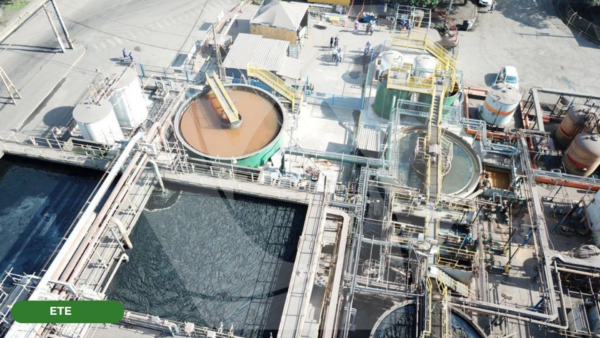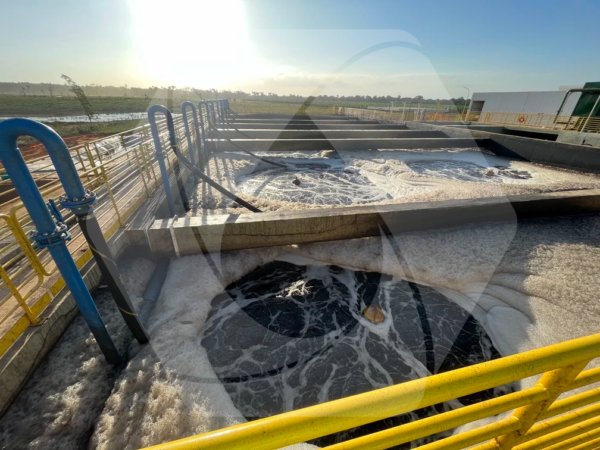The beverage industry has an intrinsic relationship with environmental management, given the significant consumption of water and the generation of effluents during the production process.
To give you an idea, in beer production, for example, it is estimated that 3 to 10 liters of water are needed for every liter of beer, depending on the size of the brewery and the process.
The importance of efficient WWTPs in the beverage industry
In the beverage segment, a Effluent Treatment Plant (ETP) is a critical component in guaranteeing sustainability, product quality and continuity of operations.
It is the ETE which ensures that effluents are treated in accordance with current environmental legislation, avoiding fines, embargoes and damage to the company’s reputation. Proper treatment reduces the organic load, nutrients and contaminants present in the effluent, preserving the receiving water bodies.
In addition, correct treatment avoids interruptions in production due to problems related to improper waste disposal. Well-designed and operated systems can also promote the reuse of water in the production process, reducing operating costs and the environmental impact of the project.

TEE and production in the beverage industry
The relationship between the WWTP and production goes beyond environmental aspects, as the WWTP must be considered an integral part of the production process, since the impact between the sectors is direct.
A wastewater treatment plant that doesn’t operate properly can interrupt production, affecting the supply of the final product and generating delays and additional costs. Unplanned discharges, which are not included in the design of the wastewater treatment plant, also have a major impact on proper operation and can reduce efficiency to extremely low levels.
One of the most important aspects of effluent treatment for the beverage industry is the use of anaerobic processes. These processes are essential for the degradation of organic matter, generating biogas as a by-product, which can be used as a renewable energy source. However, in order to guarantee the efficiency and stability of the anaerobic system, good sizing of the WWTP and rigorous management and operation are essential.
One of the biggest risks associated with inadequate management is the loss of anaerobic sludge, which is the biological basis of the process. This sludge, made up of specialized microorganisms, is not easy to replace quickly in the reactor, which can seriously compromise the performance of the treatment and lead to additional costs for the recovery of the system.
Efficient wastewater treatment plant management = savings, sustainability and business security
The profitability of the business is also positively impacted by the reuse of biogas and treated water. treated waterIn addition, these actions result in greater levels of sustainability, reducing the company’s water and carbon footprint. In addition, these actions result in greater levels of sustainability, reducing the company’s water and carbon footprint.
On the other hand, an inefficient WWTP can cause serious environmental damage. The improper disposal of effluents can cause water pollution, affect aquatic ecosystems and compromise the availability of water for local communities. Environmental penalties can lead to the stoppage of production activities, causing financial losses and loss of market share. In addition, cases of environmental contamination associated with the industry can cause wear and tear on consumers, investors and regulatory bodies.
The need for corrective treatment and the payment of fines and fees can significantly increase operating costs.

How to improve the efficiency of the WWTP?
To maximize the efficiency of the WWTP, it is essential to implement solutions such as continuous monitoring, ensuring that the treatment parameters are within acceptable limits. Investing in qualified teams or partner companies ensure the correct operation of the systems and the rapid identification of faults. State-of-the-art technologies, such as anaerobic reactors (low or high rate), membrane bioreactors (MBR) and reverse osmosis systems, improve treatment efficiency and enable the recovery of water resources.
Investing in technology, training and continuous monitoring guarantees not only compliance with regulations, but also the perpetuity and success of the business in an increasingly demanding market.
Having an efficient WWTP is more than a legal requirement for the drinks industry, it is a strategic tool for sustainability, competitiveness and environmental protection. Therefore, in my opinion, all managers should consider the WWTP as part of the production line.
By Otávio Almeida – New Business Director at EP Group – EP Process Engineering
An engineer with a degree from UNESP/SP and a post-graduate degree in Environmental Management and Technologies from the University of São Paulo (USP), Otávio Almeida has a career marked by successful cases in intelligent environmental solutions, water recycling and effluent treatment systems for industries in various segments.
LinkedIn: https://www.linkedin.com/in/otavio-almeida-1a572a148/
